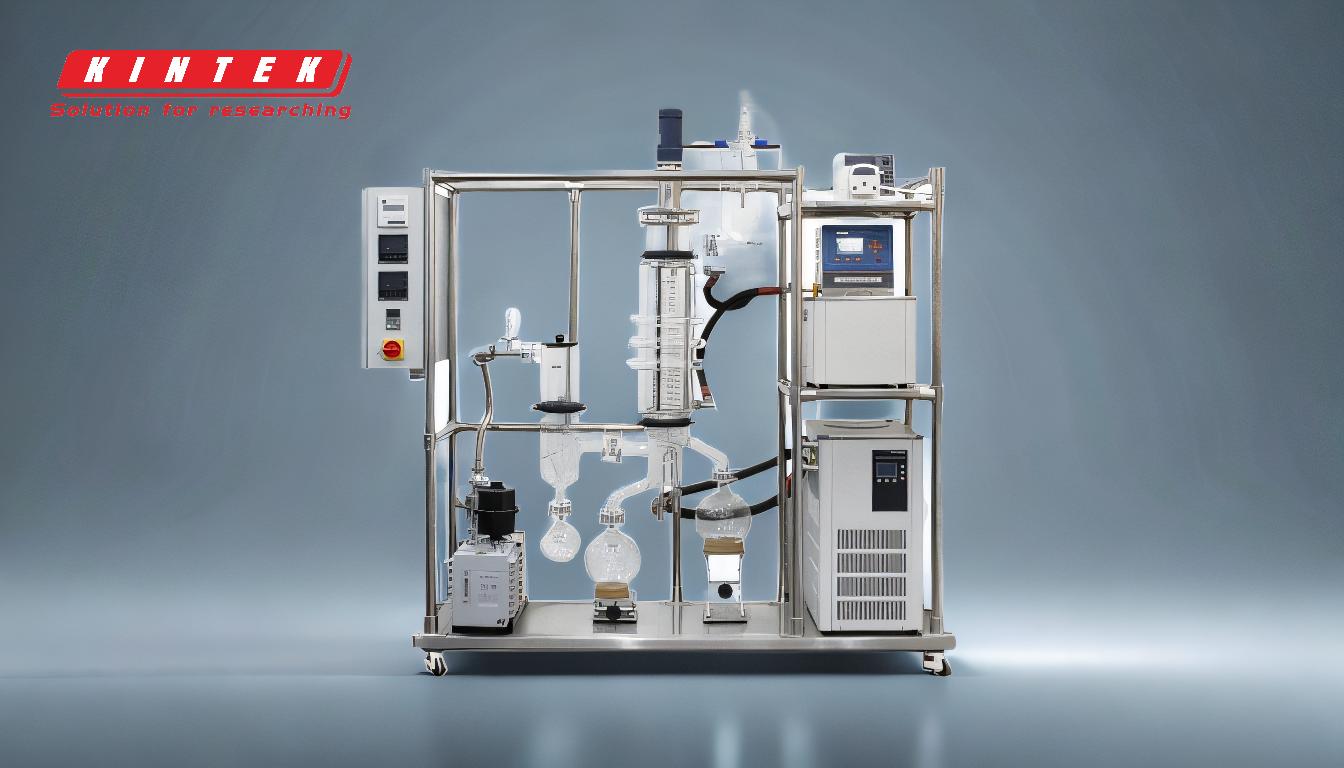Fractional distillation of cannabis is a specialized process used to isolate and purify specific cannabinoids and other compounds from cannabis oil. This method leverages the differences in boiling points of various compounds to separate them into distinct fractions. The process begins with the extraction of crude oil from the cannabis plant, which is then heated to precise temperatures to vaporize specific cannabinoids like THC or CBD. The vaporized compounds are then condensed back into liquid form, resulting in a highly purified distillate. This technique is crucial for producing cannabis products with specific therapeutic properties, as each cannabinoid has unique effects and applications.
Key Points Explained:

-
Definition and Purpose of Fractional Distillation:
- Fractional distillation is a process used to separate mixtures of liquids with similar boiling points.
- In the context of cannabis, it is used to isolate specific cannabinoids like THC or CBD from the crude cannabis oil.
- The goal is to produce a highly purified distillate that can be used for various therapeutic and recreational purposes.
-
The Process of Fractional Distillation:
- Heating and Vaporization: The crude cannabis oil is heated to a specific temperature, targeting the boiling point of the desired cannabinoid (e.g., THC at 157°C).
- Vapor Travel and Separation: The vaporized compounds travel up a distillation column, where packing materials help in separating the different components based on their boiling points.
- Condensation and Collection: At the top of the column, the vapors encounter a condenser, which cools them back into liquid form. This liquid is then collected as the purified distillate.
-
Importance of Boiling Points:
- Each cannabinoid and terpene in cannabis has a unique boiling point.
- By precisely controlling the temperature, specific compounds can be isolated. For example, THC can be separated from CBD, which has a different boiling point.
- This precision allows for the creation of products with specific cannabinoid profiles, tailored to different therapeutic needs.
-
Initial Extraction of Crude Oil:
- Before fractional distillation can occur, crude cannabis oil must be extracted from the plant material.
- This is typically done using solvent-based extraction systems like the PX1 or PXP systems.
- The crude oil usually contains a THC/CBD concentration of 60-80%, which serves as the starting material for the distillation process.
-
Equipment and Design Considerations:
- The design of the distillation column and the type of packing material used can significantly affect the efficiency and purity of the separation.
- Different still designs and packing materials can result in varying levels of separation, impacting the final quality of the distillate.
- Advanced systems allow for precise control over temperature and pressure, ensuring optimal separation of cannabinoids.
-
Applications and Benefits:
- Therapeutic Uses: Different cannabinoids have unique therapeutic properties. For example, THC is known for its psychoactive effects, while CBD is used for its anti-inflammatory and anxiolytic properties.
- Product Consistency: Fractional distillation ensures a consistent and high-quality product, which is crucial for both medical and recreational markets.
- Versatility: The process can be used to create a wide range of cannabis products, from tinctures and edibles to vape oils and topicals.
-
Challenges and Considerations:
- Temperature Control: Precise temperature control is essential to avoid degrading the cannabinoids or terpenes.
- Equipment Costs: High-quality distillation equipment can be expensive, making it a significant investment for producers.
- Regulatory Compliance: Producers must adhere to strict regulations regarding the purity and safety of cannabis products, adding another layer of complexity to the process.
By understanding these key points, one can appreciate the complexity and precision involved in the fractional distillation of cannabis. This process not only enhances the purity and potency of cannabis products but also allows for the creation of tailored formulations that meet specific therapeutic and recreational needs.
Summary Table:
| Aspect | Details |
|---|---|
| Purpose | Isolate and purify specific cannabinoids (e.g., THC, CBD) from cannabis oil. |
| Process | Heating, vaporization, separation, and condensation of cannabinoids. |
| Key Factor | Precise control of boiling points for targeted compound isolation. |
| Equipment | Distillation columns, condensers, and advanced temperature control systems. |
| Applications | Therapeutic products, tinctures, edibles, vape oils, and topicals. |
| Challenges | Temperature control, equipment costs, and regulatory compliance. |
Ready to explore how fractional distillation can enhance your cannabis products? Contact us today for expert guidance!










